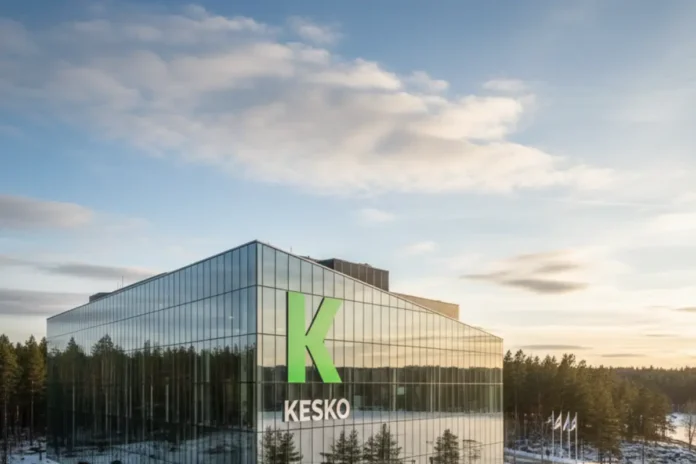K-Market Ruokamestari in Lapinlahti, Finland, has cut its electricity consumption by nearly a third following a major renovation that replaced old cooling systems, installed LED lighting, and introduced advanced waste-heat recycling technology.
The upgrade, completed in 2024, has left the store both larger and more efficient. Sales space has grown to 950 square metres — an increase of 80 m² — while a further 100 m² has been added in technical space. Despite fitting more refrigeration equipment to accommodate frozen foods, dairy, and beverages, the store’s energy bills have dropped sharply.
More Space, Lower Bills
Retailers Sari Suutarinen and Tomi Lehtolainen said the investment has transformed the way the store operates.
“Our renovated store now offers more space for frozen foods, drinks and dairy products, but at the same time our energy use is down by about 30%,” they explained. “The new refrigeration units are more efficient, easier to maintain, and much better for the environment.”
The savings are significant. Kesko, which operates the K-Market chain, estimates the energy saved at Lapinlahti could heat six detached homes for a year. The store’s new heat-recovery system alone will generate around 100 MWh of heating energy annually, reducing reliance on purchased heat and cutting emissions.
Heat Recovery at the Core
Kesko’s Energy Director, Antti Kokkonen, said that waste-heat recovery is one of the retailer’s most effective sustainability tools.
“By recycling waste heat from refrigeration and ventilation systems, we can cover at least half of a store’s annual heating needs,” Kokkonen said. “This significantly lowers emissions while keeping costs under control.”
K-Group already has heat-recovery systems in more than 80 of its food stores across Finland, and plans to install more as part of upcoming refurbishments. The systems capture condensation heat from refrigeration as well as exhaust air, then repurpose it to heat or cool the building.
Competitor Pressure
The investment comes as Finland’s grocers face rising energy costs and increasing pressure to meet EU climate targets. Rival S-Group has also stepped up store retrofits, with Prisma hypermarkets rolling out doors on refrigeration cabinets and trialling solar panels on store roofs. Lidl Finland, meanwhile, has invested heavily in LED lighting and introduced energy monitoring systems to reduce peak usage.
Analysts say that for regional grocers, energy retrofits are becoming not just an environmental responsibility but a competitive advantage. Lower running costs can protect margins in a low-price market, while consumers are increasingly aware of retailers’ climate actions.
Part of a Bigger Push
Kesko has pledged to achieve carbon-neutral operations by 2025. Its strategy relies on both technical upgrades in stores and wider partnerships. In Espoo, the company is preparing to use waste heat from the atNorth FIN02 data centre to heat its K-Supermarket Mankkaa. The project, due to go live by early 2026, will cover nearly all the store’s heating needs and reduce district heating emissions across the area.
In addition, between 2018 and 2023 Kesko implemented more than 4,000 separate energy-saving measures across its operations, delivering savings of 115 GWh. In 2024 alone, 20 stores received heat-recovery systems, cutting district heating demand by around 10 GWh.
Why It Matters
For consumers, the Lapinlahti store’s renovation will be visible in expanded fresh and frozen ranges. For Kesko, it is proof that sustainability can align with business efficiency.
The electricity savings are equivalent to the annual consumption of 12 detached homes, while heating generated through waste-heat recovery matches the annual demand of six district-heated houses. In an energy-sensitive retail market, such figures are powerful.
“The key to the renovation was replacing outdated refrigeration with modern, door- and lid-equipped cabinets,” Suutarinen and Lehtolainen said. “That one change has helped us cut costs and emissions at the same time.”
What’s Next
Kesko plans to continue pairing major store refurbishments with energy retrofits, gradually rolling out heat-recovery and LED systems across the network. As EU rules under the Fit for 55 climate package come into force, such measures are expected to become standard practice for all major retailers.
For now, Lapinlahti stands as a model for what Finnish grocers can achieve when sustainability is embedded in store design rather than treated as an afterthought.



